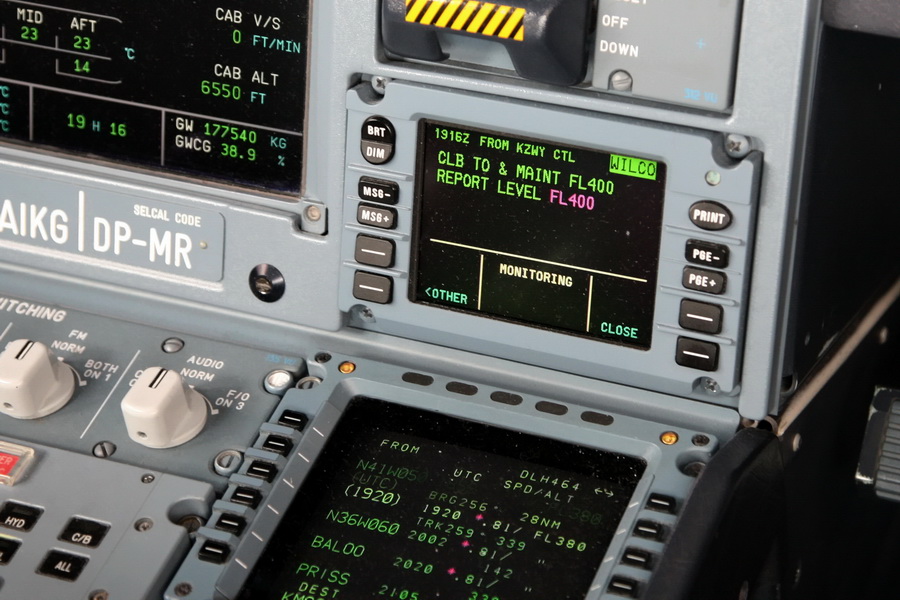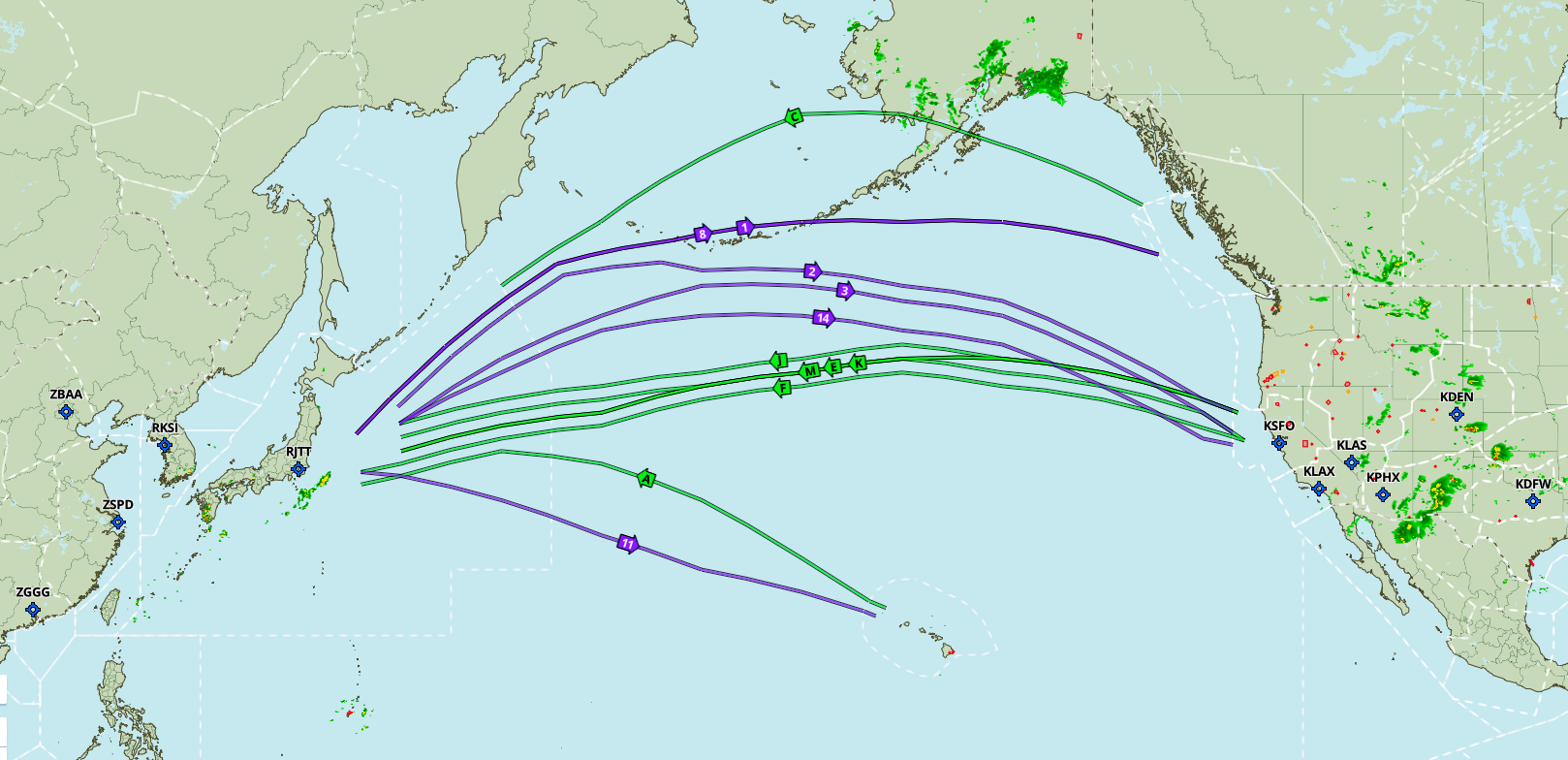Leeham News and Analysis
There's more to real news than a news release.
Bjorn’s Corner: Largest navigation change since radar, Part 7
July 27, 2018, ©. Leeham News: Last week we discussed new air navigation procedures which can benefit from the universal adoption of ADS-B.
Now we shall discuss some other needed developments for air navigation. The complement, and long-term replacement, of radio traffic with text messages.
Communication with text messages instead of radio
If we talk to someone on the phone and exchange important facts, we often say: “Send me an SMS/mail with the information so we get it right”.
In air navigation every radio exchange between Pilot and Air Traffic Control (ATC) is critical. If something is wrongly heard or interpreted it can cause an air collision or a crash.
It would be a considerable safety improvement if the messages between the Pilot and the ATC would be text-based, with the capability to see for example a departure clearance in writing before taking off. Such a message can be revisited to confirm for instance a level off altitude or a course while flying.
Text-based communication called a Pilot Controller Data Link Communication (CPDLC) has been used for many years to make the Oceanic communication simpler and safer.
The normal line-of-sight VHF communication radio doesn’t work over the Atlantic or the Oceans. There HF radio must be used which has a longer range. But it also has lower capacity and worse sound quality.
To help with the oceanic flying in tracks (Figure 2) with position reporting to keep separation, a CPDLC system called FANS 1/A is used, where the messages use ACARS (a data link for short messages between aircraft and operators) as the data link. The text messages are displayed on the FMS screen for FANS 1/A.
Eurocontrol also demands that CPDLC shall be available for certain regions of its upper airspace. Then the text messages are sent over the aircraft’s VHF based radios using their data link capability. Figure 1 shows a dedicated CPDLC display in an Airbus A330 which is placed over the FMS in the pilot’s panel.
We can see the climb clearance from the Controller and the “WILCO” (Will Comply = yes, will do) response from the pilot. This clearance then remains on the screen until the next clearance arrives. Very difficult to get it wrong between Controller and Pilot with such a communication.
In the next Corner, we will wrap up the series about Air Navigation Changes.





interesting example: climb and maintain FL400 for an A320…
The service ceiling of an A320 is usually 39,000 ft.
Always understood “Wilco” to mean pilot response of “Will comply.”
Same thing. While Bjorn is excellent writer, getting the exact nuances from one language to another is not easy.
He conveys the correct intent and that is what counts.
I would be embarrassed to even speak my horribly outdated and basic German.
Other than more prominent display and get away from the old green color (Black on yellow works very well) I like it.
Black on yellow would not work very well at all I’m afraid.
Black background is used universally for high contrast and suitability for all lighting conditions (think operations at night) except in the case of PFD with artificial horizon / synthetic vision.
Note that there are conventions that must be followed (see FAR 25.1322(e)) so use of a color like yellow for a routine message or a background may be discouraged on that basis alone.
Also, in the example, the REPORT LEVEL FL400 message has the FL400 in a different color, presumably in order to emphasize it; this may be more challenging with a colored background.
I see the point, but black on yellow would be black print on a yellow background.
Its been proven to be the best reading contrast.
Yellow being a warning I can see how that might not work well.
Night visions wise? Hmmm.
A yellow background display would be like a blinding flashlight in a cockpit at night, and would hamper night vision of the pilots. During the day, I’d also be worried about how readable the display is in with sun glare.
Beyond cockpits, many of these same rules apply in control towers too.
See this sample link at NASA to get an idea of the degree of research that goes into this… people spend entire careers just on this topic
https://colorusage.arc.nasa.gov/aerospace_1.php
That picture is from an A330-300 operated by Lufthansa (D-AIKG) 😉
Thanks, wrongly labelled in Google images.
Thank you Bjorn for this series. It was very useful for me, a non-pilot.
I think the readers should understand that occasional, unintended errors such as the one here with a simple typo (A320 instead of A330, everyone knows A320 cannot cross the Pacific) should not be used to diminish the contribution Bjorn makes with these educational (for me anyway) articles.
Fully agreed.
Be it a typo or a language aspect we need to accept that.
Bjorn has both a fantastic engineering background and can explain all that.
English is not his first language. I took German in school and I know how difficult and getting a translation from one to the other can be. (which he is doing in his head) – its technically correct and the usage in his original Swedish, not necessarily how we would put it in English but the point is correct and its easily bridged with intent and context.
I am a pilot (former more accurate) – I have learned a lot from this series (being former I am out of the loop on the current displays, usage etc)
Its amazing and stunning stuff. Our early flying was NDB and now this, sheeese Louise.
I was reading something the other day about the worldwide use of English and those for whom its a second language. A person said he tells his kids he loves them in English as Finnish is so indirect and another whos first language is japanese finds it so much easier to swear in English.
https://www.theguardian.com/news/2018/jul/27/english-language-global-dominance